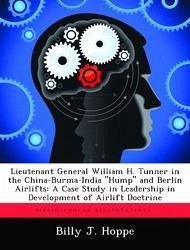Airpower in the early part of the twentieth century was dominated by the development and demonstration of the power of the strategic bomber and the high performance fighter. Yet, airlift, one of the last elements of airpower to emerge from this era, proved to be one of the most instrumental in our nation's ability to project power quickly throughout the world by moving large numbers of men and materiel. This is due primarily to the leadership of Lieutenant General William H. Tunner. During the decade of the 1940s, Tunner and his hand-picked staff of innovators developed early airlift doctrine during the "Hump" airlift of World War II and the Berlin Crisis of 1948-1949 that remains as the foundation for much of today's airlift doctrine. Through Tunner's innovative ideas to change and leadership by example, he was able to turn potential disaster in both scenarios into unbelievable demonstrations of the strength of this new arm of airpower.








